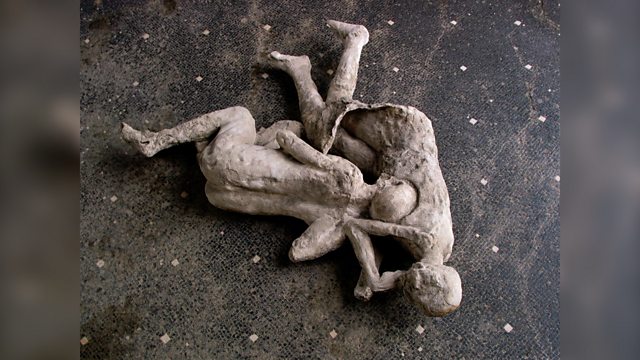Pompeii: DNA reveals truths about victims' identities
Scientists have used DNA samples from body casts in the ancient city of Pompeii to find out more about the people killed in the eruption of Mount Vesuvius in AD79.
When Mount Vesuvius erupted in the year AD79, the volcanic ash famously burned and entombed all before it in the coastal city of Pompeii.
Steadily uncovered since the 18th Century, Pompeii now makes a tableau of life in the Roman Empire at its peak - the houses, the possessions, the decorations, and some of the victims who could be recognised by the hollows left in the hot pumice as it rained down around them. By filling in those hollows with plaster, 19th Century archaeologists captured that moment of death for those poor victims, and those casts are part of the chilling display that visitors have seen since.
The work incidentally captured fragments of bones. Restoration work in the past decade has given geneticists in Italy and at the Max Planck Institute for Evolutionary Anthropology in Germany a chance to recover traces of DNA that that can help build a more intimate picture of the volcanic victims.
Alissa Mittnik of the Max Planck Institute is one of those geneticists.
"Pompeii is of course famous for the different kinds of stories," she says. "I think more than any other site this brings modern people closer to ancient times and the actual lived history and the daily life of people."
(Photo: Body casts in Pompeii. Credit: Archaeological Park of Pompeii)
Duration:
This clip is from
More clips from Science In Action
-
![]()
How do chimps learn their skills?
Duration: 15:25
-
![]()
Libanoculex Intermedius—Can carbon capture live up to its hype?
Duration: 00:52
-
![]()
How 'viral sex' in bats can create new hybrid Sars viruses
Duration: 06:05
-
![]()
HIV: The dangers of hidden viruses - and how to find them
Duration: 05:23






